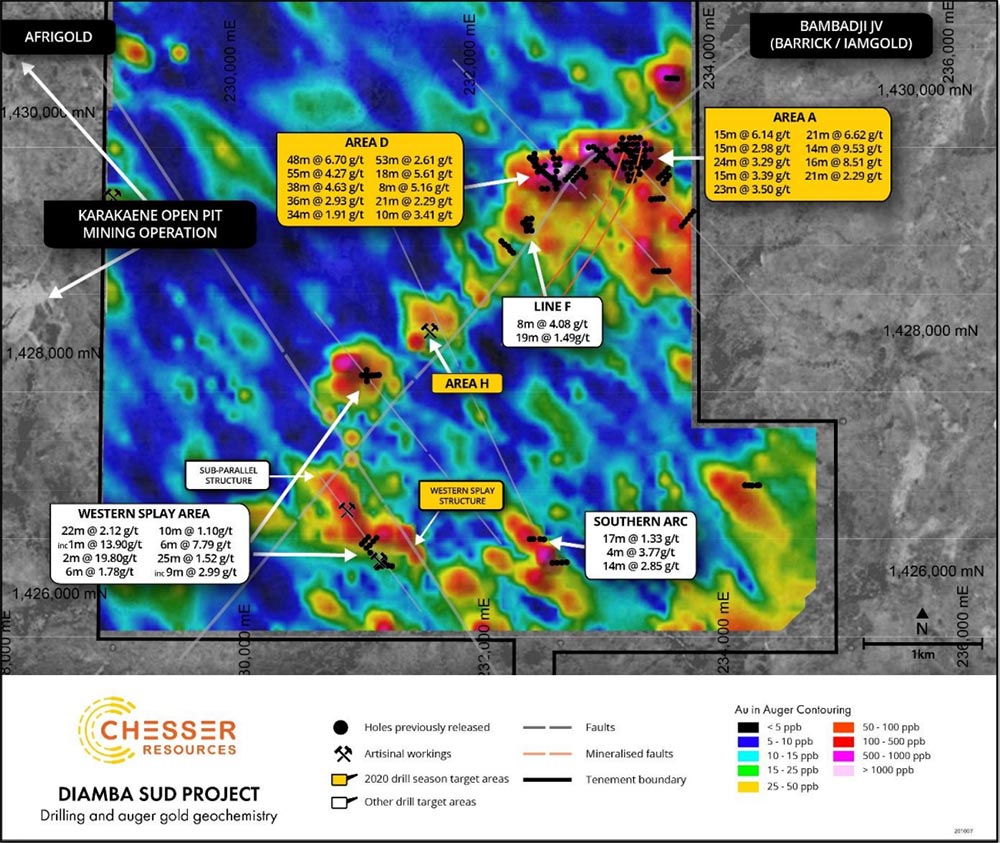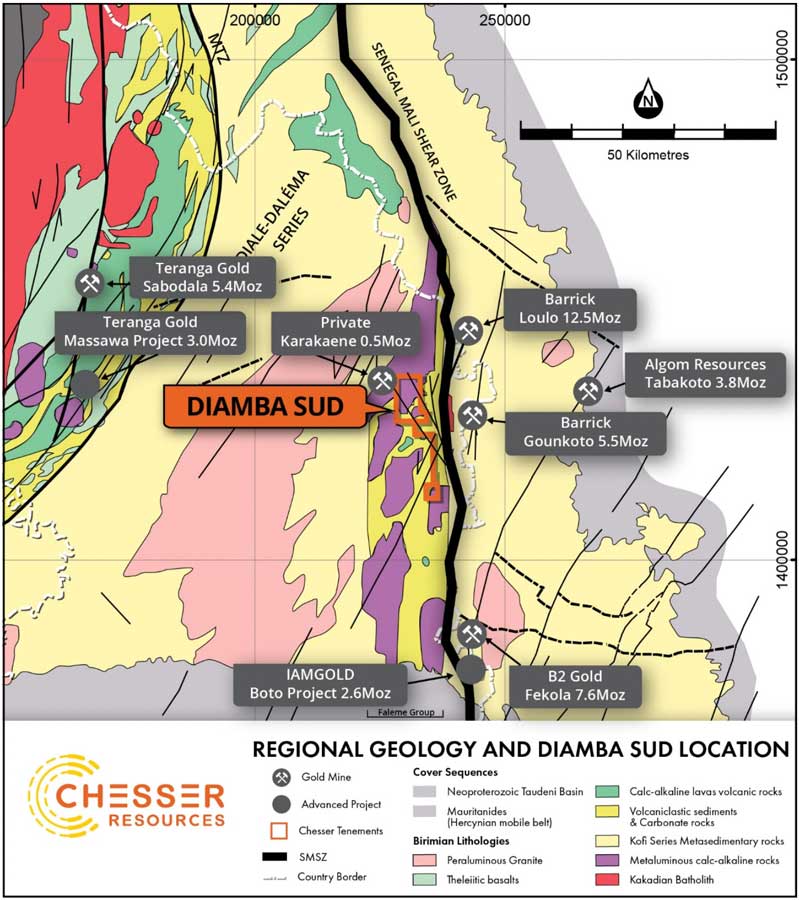Chesser Resources’ Diamba Sud shows all the signs of ‘a very large gold system’

Pic: John W Banagan / Stone via Getty Images
Special Report: Has explorer Chesser Resources (ASX:CHZ) ‘grabbed the tail’ of a multi-million-ounce gold camp at Diamba Sud? A 20,000m drilling blitz is underway to find out.
Chesser Resources now believes there are striking geological similarities between its Area A (and potentially Area D) discoveries at the flagship Diamba Sud project in Senegal, and Barrick’s 5.5moz Gounkoto deposit about 7km directly east.
“What we are seeing at Area A is a dead ringer for Gounkoto,” Chesser managing director Mike Brown says.
“Area D could be also, but we have to drill deeper into the fresh rock to find out.”
In mid-October Chesser kicked off a fully funded, 20,000m drilling program to test the size of this emerging system.
The main focus will be exploring around the recent shallow, high grade Area D discovery at depth and along strike.
“All that mineralisation, so far, has only been drilled down to 70m depth,” Brown says.
“Nothing has really been tested below that.
“At Area A we are chasing a ‘cross cutting’ structure, which is open down to the south west, then we look to do ‘infill’ drilling.
“At this stage we will do 50 per cent drilling at Area D, 30 per cent at Area A and 20 per cent on two other exciting targets that have never been drilled.”
One of these targets, Western Splay, underpins Chesser’s geological theory as to why Diamba Sud is such a special project – the fact that it is on a ‘splay’ off the Senegal-Mali shear zone.
The shear zone is the source of the deep gold-bearing fluid. However, it is the splays coming off the shear zone that provide the ‘open space’ to allow these deposits to form.
“It seems to be a critical factor in whether a deposit is formed or not, and Western Splay is the one structure on the property that we can see on airborne geophysics,” Brown says.

‘A very large system’
Diamba Sud is a greenfields project along the western side of the prolific Senegal-Mali Shear Zone (SMSZ).
The eastern side is home to 45 million ounces of tier 1 gold production. There’s very little on the western side.
That’s because explorers didn’t know how to pinpoint deposits under the western side’s layer of laterite cover.
This laterite is also drenched during the wet season, making normal soil sampling techniques ineffective.

The first company to ‘crack the nut’ was Chesser, which substituted soil sampling with slightly deeper augur drilling.
In 2019, it discovered ‘Area A’ with impressive intercepts like 21m at 6.62 g/t gold.
But Chesser really caught the market’s attention in July this year with some extremely high-grade gold intercepts in five successive holes at the adjacent Area D, including 10m at 25 grams per tonne (g/t).
Thick, shallow, and high grade – that’s the trifecta investors look for in drilling results.
Chesser now believes the adjacent Area D is quite possibly the continuation of Area A that has been ‘offset’ by a regional fault.
That’s important for two reasons, Brown says.
“One, what we were seeing at Area A suggests a very large system, lots of fluid, and a long period of mineral deposition.
“A system that strong must have a larger footprint.
“And yet it was constrained down to the south east. We had this potentially big system but couldn’t put the pieces together.
“That’s why Area D is very important — it opens up the continuation of Area A.”
Reason two: it shows the mineralisation is running back into Chesser’s ground.
Area A is just 700m from a tenement boundary where major miner Barrick is possibly drilling a discovery of its own.
“People ask ‘well, where’s this system go? Does it disappear off into Barrick’s ground?’,” Brown says.
“We don’t think so. The geophysics show that there is a big, strong 6km long linear anomaly running out to the north west, back into our ground.
“It is showing all the signs of a big strong system which could be quite extensive.”
The road to a maiden resource
Infill drilling at Area A and potentially Area D could lead to a second phase of drilling before the wet season starts again in July next year, Brown says.
This second phase could give Chesser enough data to commence work on a maiden gold resource. Much of that will depend upon results and the complexity of Area D.
“We are now looking at getting first results from late November,” Brown says.
“We have two rigs running initially on double shifts, one diamond and one RC. Depending on how the results go we may bring in another rig to speed up the program.
“This will give us more leeway for a possible second phase of drilling in the latter half of the season.”
This article was developed in collaboration with Chesser Resources, a Stockhead advertiser at the time of publishing.
This article does not constitute financial product advice. You should consider obtaining independent advice before making any financial decisions.
Related Topics

UNLOCK INSIGHTS
Discover the untold stories of emerging ASX stocks.
Daily news and expert analysis, it's free to subscribe.
By proceeding, you confirm you understand that we handle personal information in accordance with our Privacy Policy.








